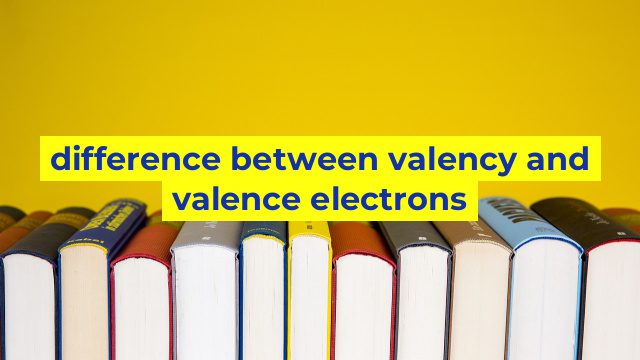The Difference Between Valency and Valence Electrons
Valency and valence electrons are two important terms that are commonly used in the field of chemistry. While these two terms are related, they refer to two distinct concepts, which are important to understand when it comes to the properties and behavior of chemical compounds. In this article, we will discuss the main differences between valency and valence electrons.
Valency
Valency refers to the number of electrons an atom of an element can donate or accept to form a chemical bond with other atoms. In other words, valency is a measure of the bonding capacity of an atom, and it is determined by the number of valence electrons that the atom has. The valency of an element can be easily determined by looking at its position in the periodic table. For example, metals usually have a valency of either one or two, while non-metals usually have a valency of either three, four or five.
Valency is an important concept, as it helps chemists to predict the way that atoms will interact in chemical reactions. For example, if an atom has a valency of two, it means that it can donate or accept two electrons to form a chemical bond with another atom that has a valency of two. This information can be used to predict the formation of various chemical compounds.
Valence Electrons
Valence electrons are the electrons that are found in the outermost energy level of an atom. These electrons are involved in the formation of chemical bonds, as they are the ones that interact with the electrons of other atoms to create chemical compounds. The number of valence electrons varies depending on the element, but it generally ranges from one to eight. For example, sodium (Na) has one valence electron, while oxygen (O) has six valence electrons.
The number of valence electrons is also an important factor in predicting the behavior of atoms in chemical reactions. Atoms with one or two valence electrons are usually very reactive, as they are actively seeking to either donate or accept electrons to achieve a stable electron configuration. On the other hand, atoms with eight valence electrons (known as noble gases) are generally unreactive, as their electron configuration is already stable.
In conclusion, while valency and valence electrons are related concepts, they encompass different aspects of an atom’s behavior in chemical reactions. Understanding these concepts is key to predicting the behavior of atoms and the formation of chemical compounds.
Table difference between valency and valence electrons
| Valency | Valence electrons |
|---|---|
| It is the combining capacity of an atom. | They are the outermost electrons of an atom that participate in chemical bonding. |
| It depends on the number of electrons an atom can lose, gain, or share to become stable. | It is determined by the group number of the element in the periodic table. |
| Valency is an integer value. | Valence electrons can be determined by their position in the electron configuration. |
| Valency can be positive, negative or zero. | Valence electrons are always negative. |
| Valency can change during chemical reactions. | Valence electrons remain the same for an element. |

